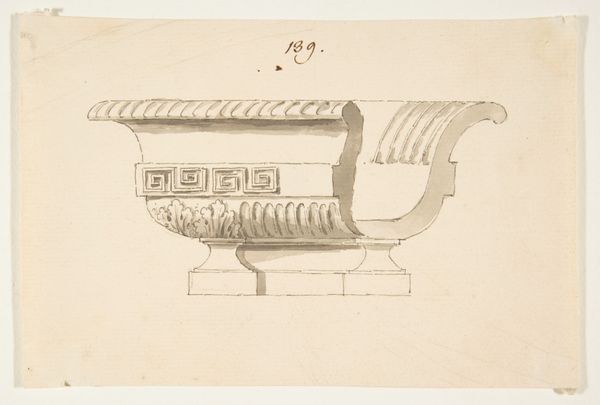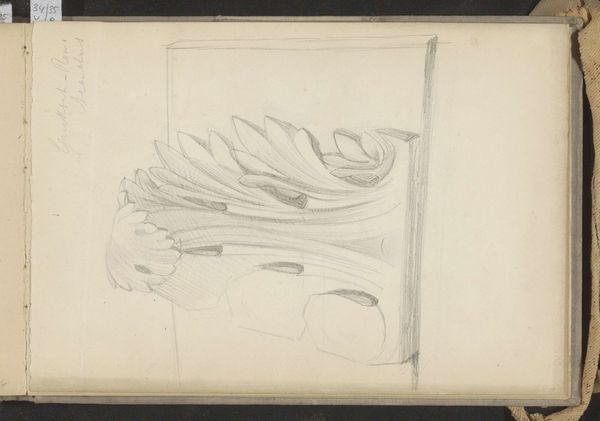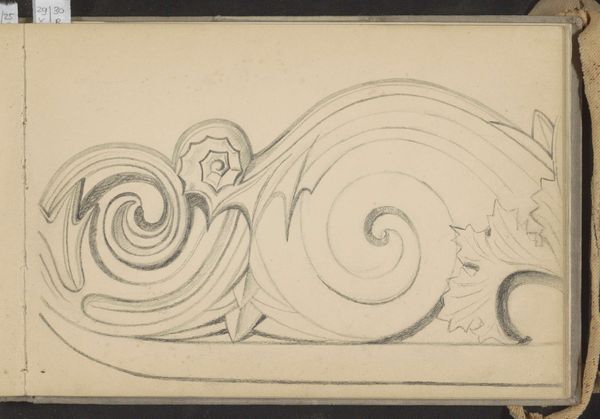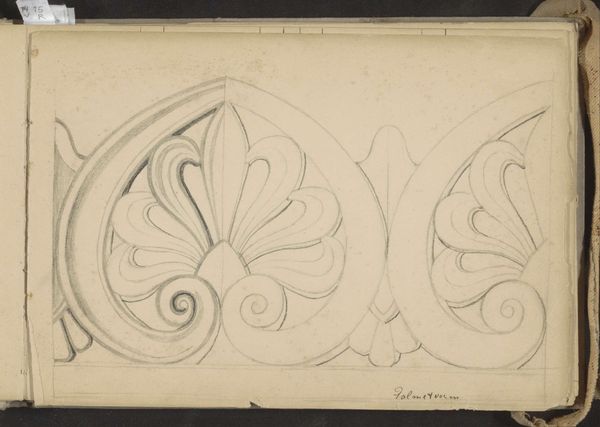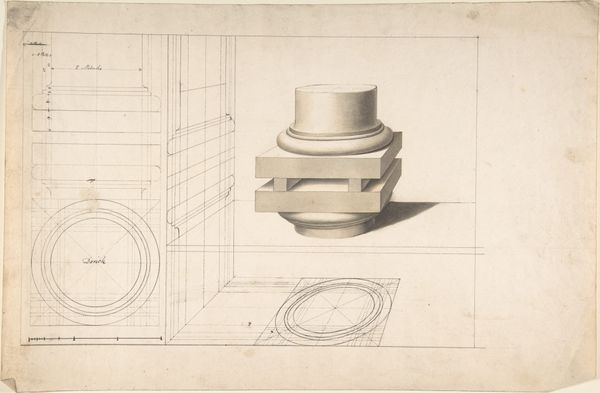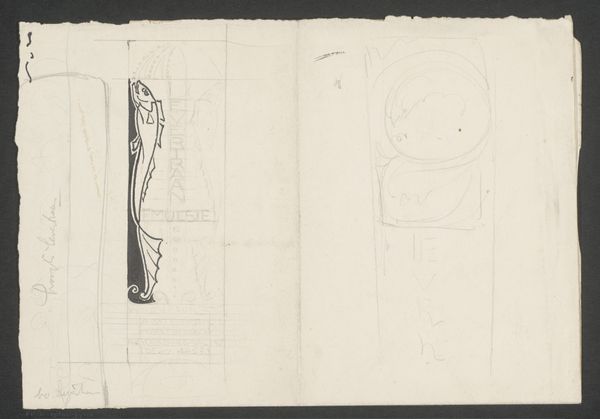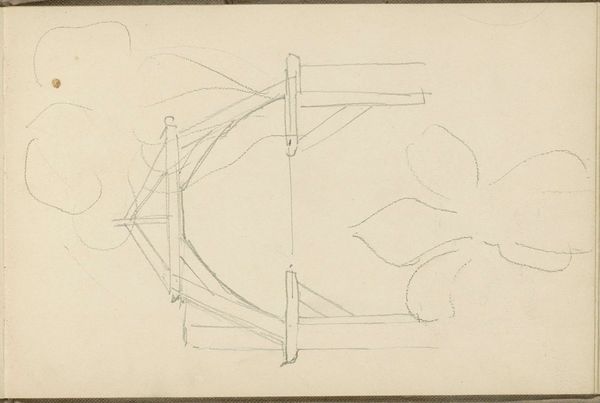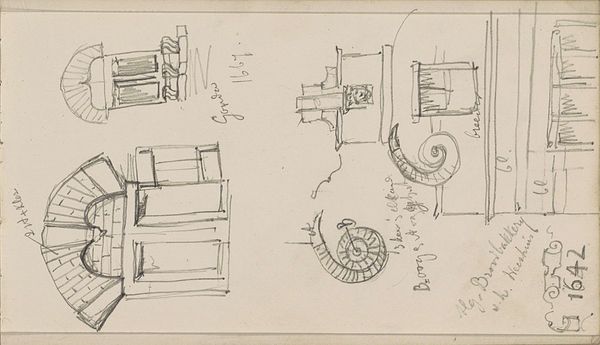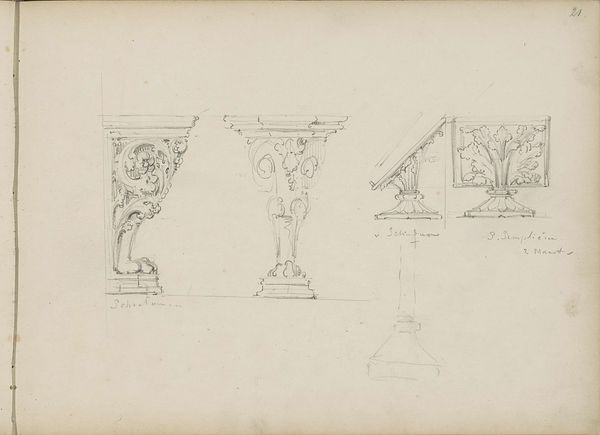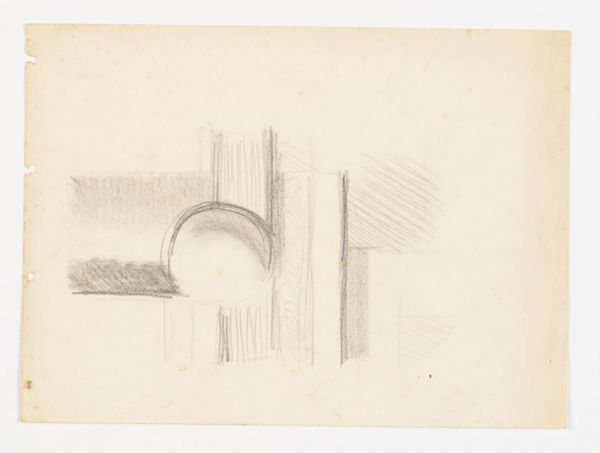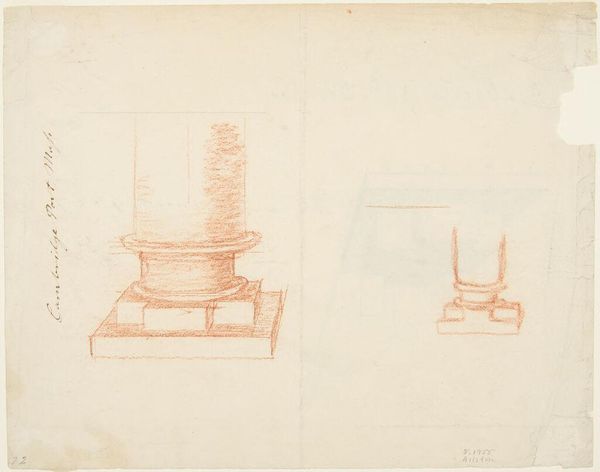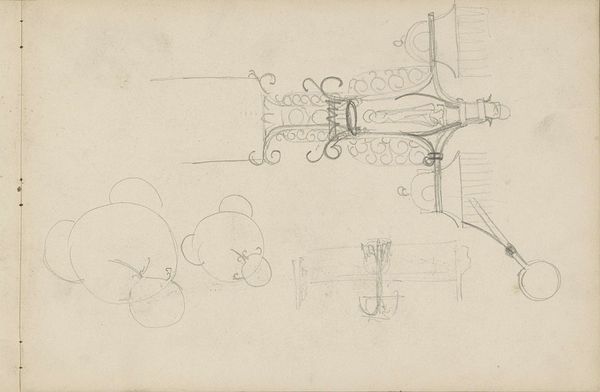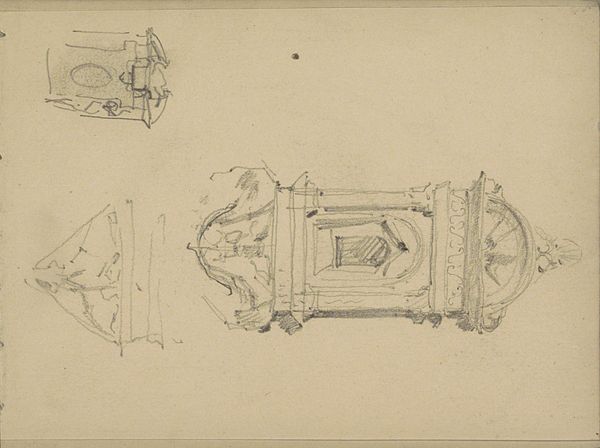
drawing, pencil, graphite
#
drawing
#
classical-realism
#
form
#
geometric
#
ancient-mediterranean
#
pencil
#
line
#
graphite
Copyright: Rijks Museum: Open Domain
Editor: Here we have Johanna van de Kamer’s "Sierlijst met Ionisch kapiteel," dating from around 1890 to 1922. It’s a graphite and pencil drawing showcasing a close-up of an Ionic capital. I'm immediately struck by how academic it feels, almost like a study. How do you interpret this work in relation to its historical context? Curator: This drawing offers a fascinating lens through which to examine the enduring legacy and power dynamics embedded within classical forms. The Ionic capital, a symbol deeply rooted in ancient Greek architecture, speaks to notions of civilization, rationality, and, historically, a very specific form of elite, Western identity. Editor: So, its historical significance carries a lot of weight? Curator: Precisely. The adoption and reinterpretation of classical motifs during the late 19th and early 20th centuries – the period when this drawing was made – reveals a desire to connect with that perceived legacy, often reinforcing existing social hierarchies and colonial narratives. Van de Kamer, in meticulously rendering this capital, participates in this visual dialogue. Editor: I see. Is it problematic that classical art gets re-interpreted? Curator: The question isn’t whether its re-interpretation is inherently ‘problematic,’ but rather how these forms are used, for what purposes, and whose stories they center. This drawing prompts us to consider the complex interplay between artistic practice, historical narratives, and the ever-evolving construction of cultural identity. Do you notice anything particular about her technique in relation to the subject? Editor: The precision. Each swirl seems perfectly calculated. Maybe to try and capture the perfection the Greeks were aiming for. Curator: Exactly. That precision highlights a specific intention. This has been a great exercise in interpreting the art of the past. Editor: I agree. I now look at the drawing with a greater understanding of how something so seemingly simple can be deeply rooted in power and cultural identity.
Comments
No comments
Be the first to comment and join the conversation on the ultimate creative platform.
